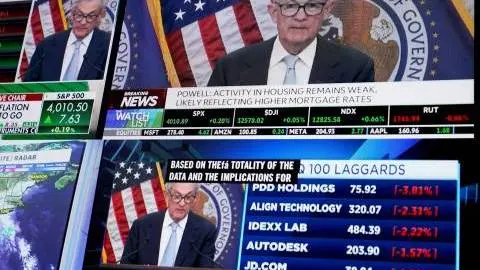Credit chaos: is the worst behind us?
It's been anything but a dull week in the markets. And the distress in the banking system after the forced rescue of Credit Suisse in Europe and the demise of Silicon Valley Bank in the States has led to severe volatility and, of course, increased uncertainty. And while the mood is now calmer, this story is far from over
Spread widening and curve flattening across the board
Increased uncertainty in the global banking system and violent swings in rates markets have led to weakness in credit. Statistically, spreads are looking cheap, but we argue that risks remain high and market direction is still uncertain. Additionally, there may be more 'hunting for weakness'. So, here's a warning: don't try to catch any falling knives.
- EUR corporate spreads are 12bp wider since the tights on Friday 10th
- EUR financial spreads are 46bp wider since the tights on Friday 10th
- USD corporate spreads are 23bp wider since the tights on Thursday 9th
- USD financial spreads are 58bp wider since the tights on Thursday 9th
Furthermore, the short end of (both EUR and USD) credit curves have been underperforming, drastically pushing curves much flatter.
The AT1 market fell drastically
Chaos continued yesterday in bank-subordinated bond markets. Subordinated debtholders should be prepared to face losses in times of trouble; the complete wipeout of Credit Suisse’s AT1 layer as part of the emergency rescue deal orchestrated with UBS came, however, as a shock to many. The Swiss authorities didn’t respect the normal creditor 'waterfall'.
While AT1 bonds will be wiped out, shareholders get to walk away with CHF3bn. Other European bank regulators rushed to confirm that the Swiss way should not be seen as the blueprint for future bank trouble in Europe as a whole. This has calmed the AT1 markets somewhat but is unlikely to remove all the uncertainty hanging over these markets for now.
Spillover into credit
The rescue of Credit Suisse and, subsequently, the debacle in the AT1 market has, of course, sent shockwaves across other areas of credit. Corporate credit has felt the pinch as the bearish run continues. Initially, the rest of the banking liability structure widened rather notably, but there was a turn in spread direction on Monday afternoon. The high-yield credit space was also under a lot more pressure, widening by 146bp since the tights seen on 6 March. Corporate hybrids have also been under pressure, widening by 44bp in the past two weeks.
Concerns on regional banks in the US
Another drag on bank risk comes from the US regional banks. After three banks failed in the past couple of weeks, US regional banks have remained under strain. Silicon Valley Bank and Signature Bank were labelled earlier as systemic on-the-go to allow for support for their complete deposit bases. In contrast to her earlier remarks, the US Treasury Secretary Janet Yellen notes in a speech today, Tuesday, that if deposit runs of smaller banks pose the risk of contagion, similar actions could be warranted again.
The US officials are also said to study ways to extend the FDIC deposit coverage on a temporary basis, according to media sources. If extended, these types of measures should help alleviate bank risk and provide more stability for (uninsured) deposits. Large deposit shifts increase the risk of liquidity-driven bank collapses. Yellen earlier spooked the markets by indicating that the government is willing to step in only for the uninsured depositors of banks that pose systemic risk to the financial system. The more limited size of regional banks means that it is less straightforward to assume they would then be extended this support. This would create pressure for uninsured depositors to move from smaller non-systemic banks to larger systemic ones.
Tighter lending standards will widen spreads long term
Lending standards have been tightening in both Europe and the US. This will have a negative credit effect on credit spreads. As the availability of liquidity lowers, the demand for a higher spread will follow. As such new issue premiums on newly issued bonds will increase, and ultimately spreads will need to be priced wider long term. This will particularly be the case for the high-yield market. This isn’t necessarily driving spreads right now but does add an additional negative factor in a secondary effect.
Primary markets remain closed
The large turbulence in the rates and credit markets has left primary markets shut for the past week. Supply is still sitting rather high on a YTD basis, with:
- EUR corporate supply sitting at €81bn, up on €65bn last year,
- EUR financial supply at €108bn, up on €76bn last year,
- EUR covered bond supply at €76bn, up on €69bn last year,
- USD corporate supply at US$207bn, up on US$156bn last year and
- USD financial supply at US$107bn, down on last year’s US$176bn.
The funding environment has been more conducive for issuance in January and February, as spreads were stuck around much tighter levels. However, the cost of debt has yet again jumped higher with volatile rates and wider spreads. There are indeed some issuers side-lined for now, waiting for the primary markets to re-open, but as long as rates remain volatile and spreads widen, primary markets will remain shut for now.
Download
Download article
24 March 2023
A week that shook the markets… again This bundle contains 7 articlesThis publication has been prepared by ING solely for information purposes irrespective of a particular user's means, financial situation or investment objectives. The information does not constitute investment recommendation, and nor is it investment, legal or tax advice or an offer or solicitation to purchase or sell any financial instrument. Read more





